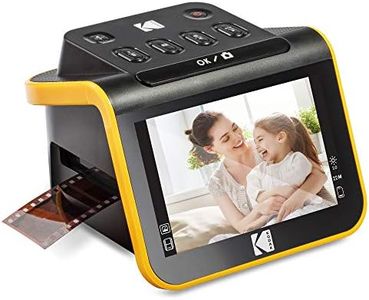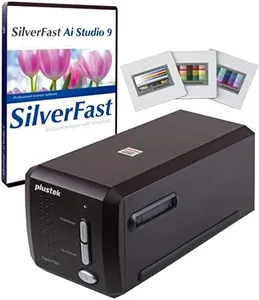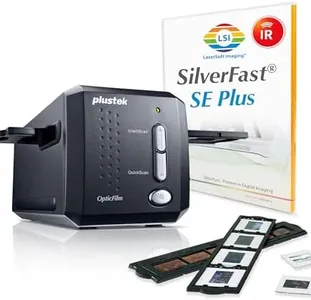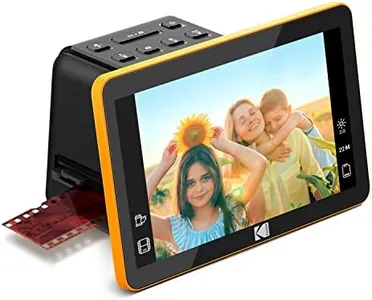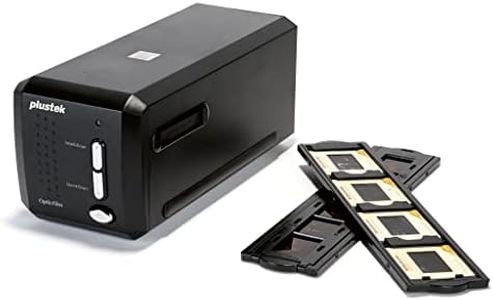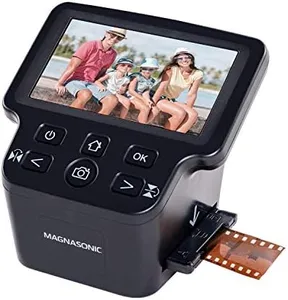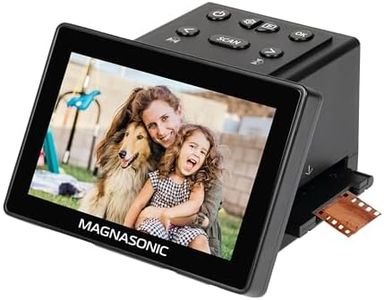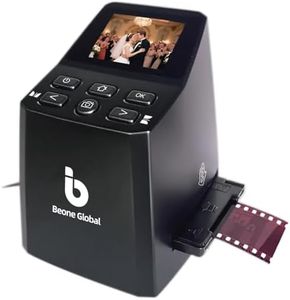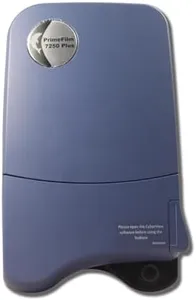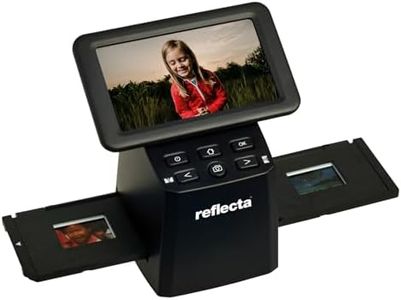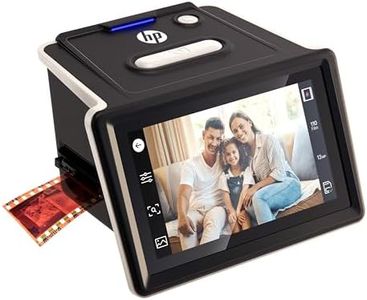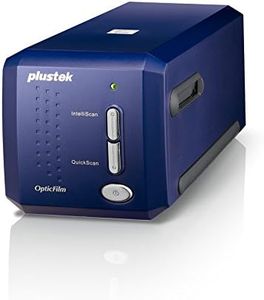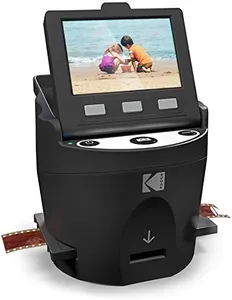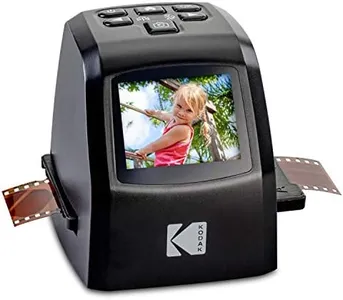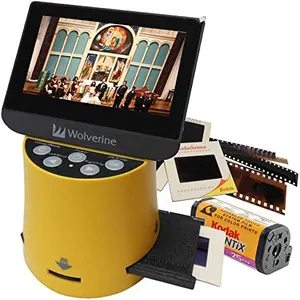We Use CookiesWe use cookies to enhance the security, performance,
functionality and for analytical and promotional activities. By continuing to browse this site you
are agreeing to our privacy policy
10 Best Slide Scanners
From leading brands and best sellers available on the web.Buying Guide for the Best Slide Scanners
Choosing a slide scanner can feel overwhelming, but understanding your needs and the key specifications can help you narrow down your choices to the best fit. Think about what you'll be scanning: family photos, professional slides, or maybe old negatives. Consider how detailed and clear you want the scans to be, how many items you plan to digitize, and how comfortable you are with various technical features. Focusing on the right specs will make your search much easier and ensure your memories are preserved in the way you envision.Resolution (DPI)Resolution is measured in DPI (dots per inch) and tells you how much detail the scanner can capture from your slides or negatives. Higher DPI numbers mean sharper and more detailed images, which is important if you plan to make large prints or do close-up editing. Entry-level scanners might offer around 1800-2400 DPI, which is enough for standard web use or small prints. Mid-range options typically provide 3000-3600 DPI, suitable for printing larger photos or cropping. Professional-level models may go to 4000 DPI and above, capturing every nuance for archiving or professional work. To pick the right resolution, think about how you’ll use the scanned files—if they’re just for sharing online, a lower resolution works; for preserving memories in high quality or making enlargements, aim higher.
Scan SpeedScan speed is about how long it takes to scan each slide or negative, sometimes listed as seconds per frame. Faster scanners help when you have lots of slides to digitize. Basic models may take up to a minute per slide, while higher-end scanners can be much quicker. If you’re digitizing only a few slides now and then, slower speeds might not be an issue. However, for bigger projects—like archiving a whole family collection—look for faster scan times to save effort and keep the process enjoyable.
Color DepthColor depth, measured in bits, indicates how many colors and shades a scanner can capture from each slide. A higher color depth lets the scanner pick up more subtle gradients and details, resulting in more lifelike and accurate digital images. Common color depths are 24-bit, suitable for casual or web use, and 48-bit, which is better for detailed photo editing or large prints. If your slides have faded colors, more color depth can help recover details and produce better results. Choose based on how important precise colors and fine details are to you.
Film and Slide CompatibilityThis spec refers to what types and sizes of films or slides a scanner can handle, such as 35mm slides, medium format, or even film strips. Make sure the scanner you choose supports the format you have—some models are limited to standard 35mm slides, while others can handle a wider range, including negatives or older formats. Start by checking your own collection and matching the scanner’s compatibility to your needs so you won’t run into problems later.
Digital ICE/Restoration FeaturesSome slide scanners offer built-in features to automatically remove dust, scratches, or fading during the scanning process—sometimes under names like Digital ICE. These tools can save a lot of time in photo editing by cleaning up old slides as they scan. If your slides are in great shape, this isn’t as crucial. But for aging or damaged slides, consider a scanner with good restoration features to get the best out of your memories with less manual effort.
Connection and SoftwareThis involves how the scanner hooks up to your computer—through USB, for example—and what software is included. Some scanners come with simple, user-friendly software to help you scan, organize, and lightly edit your images, while others include more advanced features. Think about what kind of computer you have and your comfort with software. If you prefer something easy and straightforward, pick a scanner with simple included tools. If you enjoy tweaking images and managing digital files, look for extra software features.
